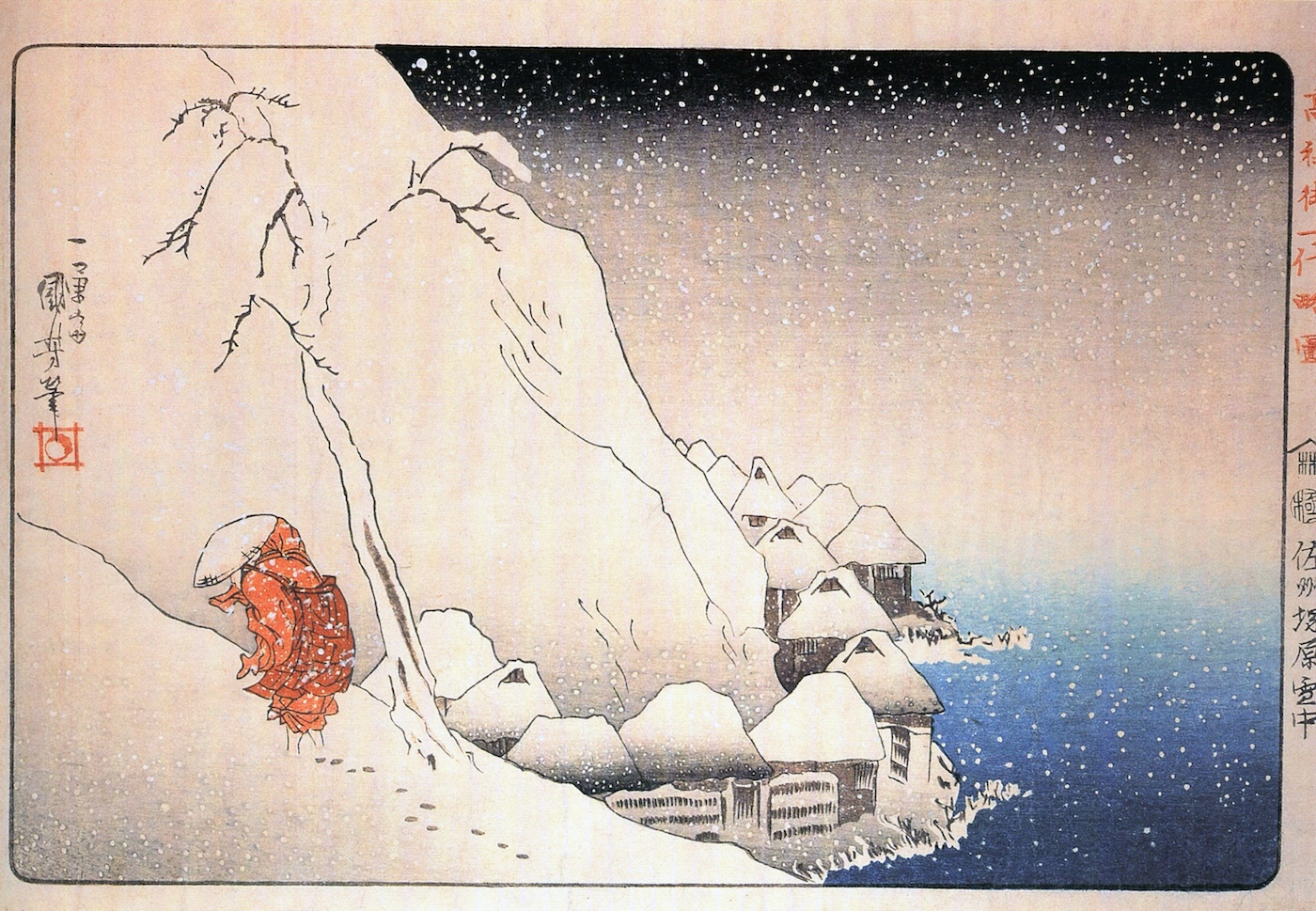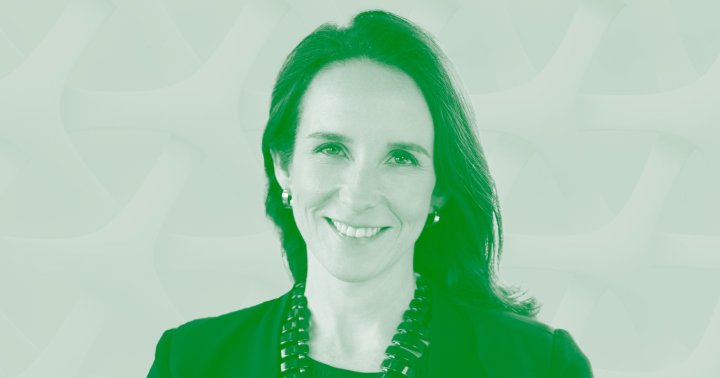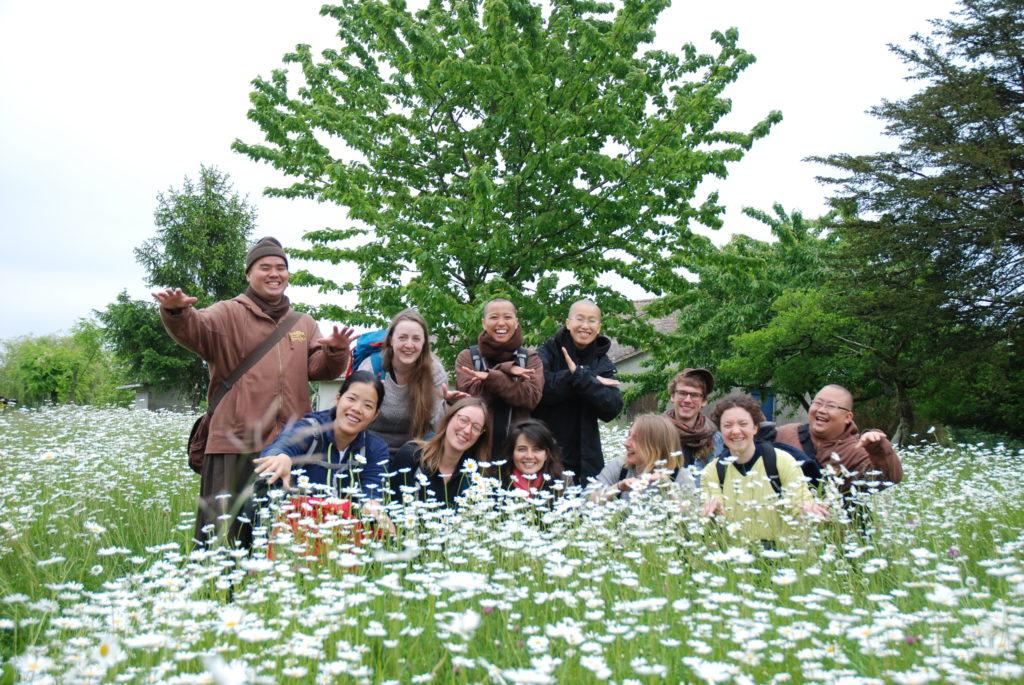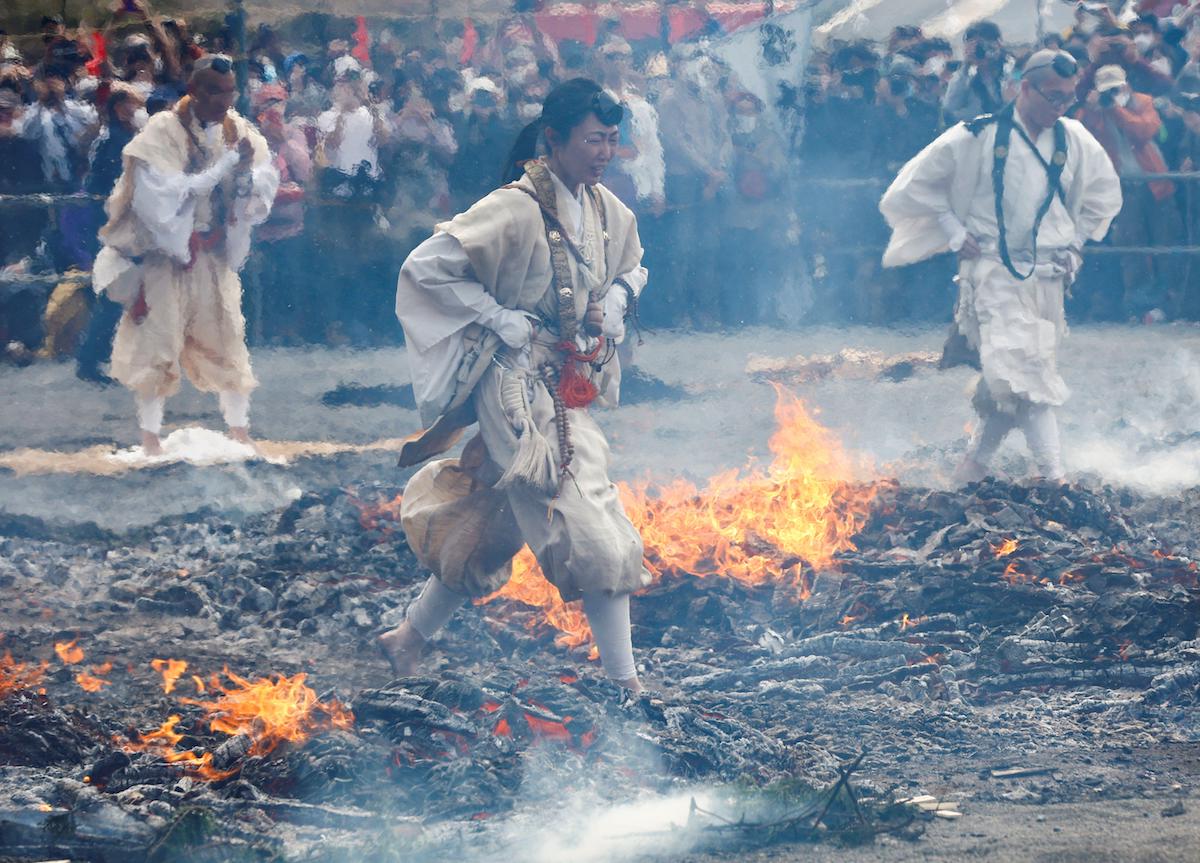Nichiren Buddhism and the Precepts
On recognizing the spiritual guidelines as actual proof of one’s practice The post Nichiren Buddhism and the Precepts first appeared on Tricycle: The Buddhist Review. The post Nichiren Buddhism and the Precepts appeared first on Tricycle: The Buddhist Review.

Buddhism has an idea called the Three Ages of the Dharma, which describes three periods over which the Buddha’s dharma changes and invariably loses its efficacy. Our current age is the Latter Age of the Dharma, where spiritual practices become superficial and ineffective, and society becomes more materialistic and less spiritually focused.
Indeed, in today’s fast-paced, chaotic world, religion and spiritual practices can feel unrelatable and overly complex. Buddhism is no exception. On the surface, Buddhism may appear to be laid-back, and even easygoing. However, upon deeper inspection, Buddhism turns out to have lots of rules, called the precepts.
The Buddha taught the eightfold path, which involves adhering to these precepts—they include abstaining from killing, lying, and stealing—that are meant as ethical guidelines for both laypeople and monastics alike. Lay Buddhists, or householders, are mostly expected to adhere to five precepts in their day-to-day routine, but this number can go up to eight during periods of holiday or retreat. For monastics, these guidelines can often expand into hundreds of rules, which shape each moment of their daily lives.
The precepts are part of the eightfold path guiding ethical behavior (right action, right speech, right livelihood). The eightfold path is grouped into the threefold training: morality or virtue (right speech, right action, right livelihood), meditation (right effort, right mindfulness, right concentration), and wisdom (right view, right intention). The three great bodhisattvas embody the threefold training in its parallels of Avalokiteshvara with compassion, Samantabhadra with practice and meditation, and Manjushri with wisdom.
A common misunderstanding of Nichiren Buddhism is the role of the precepts within the tradition. It is a misconception that Nichiren Buddhists don’t follow the precepts, thinking that the precepts were for an earlier age of Buddhism and that they no longer lead to enlightenment in the Latter Age of the Dharma. Many Buddhists (including Nichiren Buddhists!) believe this. Yet Nichiren Buddhists do indeed commit to following a single precept, the Diamond Chalice Precept. During their Jukai, or “Receiving the Precepts” ceremony, Nichiren Buddhists vow to uphold, practice, protect, and share the teachings of Namu myoho renge kyo, or the essence of the Lotus Sutra. Generally considered to be the entirety of the Lotus Sutra compiled into one auspicious phrase, the Princeton Dictionary of Buddhism defines Namu myoho renge kyo as “Homage to the Lotus Flower of the Sublime Dharma Scripture.” Spiritually dense and universal in its Buddhist connotations, elements of Namu myoho renge kyo, otherwise known as daimoku, can be seen across traditions, including the Lotus Sutra’s Parable of the Jewel in the Robe and the Tibetan Buddhist mantra, Om mani padme hum (often translated as “Hail to the Jewel in the Lotus”).
Nichiren Shonin (1222–1282) taught that the Diamond Chalice Precept contains all other percepts, adamantine like a bright jewel, a diamond, perfect and unbreakable. This use of “perfect” means that it is whole and complete, while “unbreakable” stands in to portray its inexhaustible use, as it never fails to work. In contrast to the hundreds of precepts followed by monastics in earlier ages, according to Nichiren, this single precept contains the spirit of all Buddhist precepts, offering a simplified yet profound spiritual practice.
The Diamond Chalice Precept is derived from the Brahma Net Sutra, which states: “This precept of the radiant adamantine chalice is the source of all buddhas, the source of all bodhisattvas, and the seed of the buddhanature.” Here, Nichiren uses the image of the chalice as the precept is a single container in that it holds pure, sacred spiritual water.
The Buddha, toward the end of his life, acknowledged that the community could abolish minor precepts to accommodate changing conditions. We see this flexibility in the Buddha’s wisdom of the Four Reliances:
Rely on the Dharma, not on the teacher.
Rely on the meaning, not the letter.
Rely on the definitive meaning, not on the provisional one.
Rely on wisdom, not on your discriminating mind.
Much like the Shakyamuni Buddha before him, Nichiren Shonin put his own body on the line in order to achieve this realization. As a young novice at Seicho-ji, Nichiren prayed day and night, twenty-four hours straight for twenty days, to the Bodhisattva Kokuzo to become the wisest person in Japan. In doing so, Nichiren made himself sick, and almost died from the intense effort before “early one morning” when he had a spiritual awakening and epiphany where he saw the Bodhisattva Kokuzo come to him and bestow upon him a great gem of wisdom, “as brilliant as the morning star.”
Rather than viewing morality as a cause for awakening, Nichiren said that morality is the effect of awakening.
Once Nichiren recovered his health, he realized that what he did was simply too hard for the majority of people, and that there had to be a way that everyone in the Latter Age of the Dharma could awaken. This was the central driver of Nichiren’s entire adult life: How can everyone awaken and the whole world become the Buddha Land?
Nichiren was not alone in his concern that people living in the Latter Age would be unable to follow traditional Buddhist practices toward enlightenment. Honen, Shinran, and Dogen were also influenced by the idea that in the Latter Age of the Dharma, practicing rules and forms was just too hard for the average householder. While their choices of practice differed, they each emphasized the need for a simplified practice. Nichiren taught chanting Namu myoho renge kyo—the Great Sacred Title (Odaimoku) of the Lotus Sutra. Honen and Shinran taught chanting the name of Amitabha Buddha. Dogen taught zazen.
Nichiren’s teaching offers a fresh perspective on the Buddhist precepts, emphasizing the importance of focusing on the outcome rather than getting bogged down by the rules. Nichiren taught that spiritual transformation begins with faith, not strict adherence to precepts. Rather than viewing morality as a cause for awakening, Nichiren said that morality is the effect of awakening. This means that ethical conduct naturally follows from spiritual insight, rather than being the prerequisite for it. Nichiren Buddhism considers the precepts actual proof of one’s practice—the effect, rather than the cause, of awakening.
For practitioners today, this offers an accessible, empowering approach to spiritual practice. Rather than feeling overwhelmed by rules and rituals, Nichiren Buddhists are encouraged to begin with faith. Through the simple practice of chanting, Nichiren Daishonin made spiritual awakening available to everyone. By starting with faith in Namu myoho renge kyo, practitioners naturally align their lives with the Buddhist values of compassion, wisdom, and moral conduct. To anchor this faith in the power of the Lotus Sutra, Nichiren turned to “Supernatural Powers of the Tathagata,” in Chapter 21 of the sutra, which says:
“Essentially speaking, all of the truths belonging to the Tathagata, all of the free and unhindered transcendent powers of the Tathagata, all of the innermost essentials in the treasury of the Tathagata, and all of the extremely profound deeds of the Tathagata are, in their totality, proclaimed and revealed in this sutra. Therefore, after the passing of the Tathagata, you should single-mindedly receive, embrace, read, recite, expound, copy, and practice it as taught.”
In his “Teaching, Practice, and Proof,” Nichiren wrote of the “fundamental precept” of upholding the Lotus Sutra as the “Diamond Chalice Precept”:
… the core realization of Myoho Renge Kyo, which is the main gate of the Lotus Sutra, contains all the merits of the practices and virtues of all the buddhas of the past, present, and future, which manifests as the five characters. How could these five characters not contain the merits of all precepts? Once the practitioner has this comprehensive Wonderful Precept, even if they want to destroy it, they cannot. This has been called the ‘Diamond Chalice Precept.’ All buddhas of the past, present, and future keep this precept. All the Dharma-bodies, reward-bodies, and accommodative-bodies become the buddhas of no beginning and no end… Now when all people, whether wise or foolish, householder or home-leaver, upper or lower class, of the present Latter Age of the Dharma train themselves in accord with the view of Myoho Renge Kyo, [they will] obtain buddhahood.
And in his writing titled “Conversation between a Sage and an Unenlightened Man,” Nichiren Shonin asserts that a single utterance of Namu myoho renge kyo is equivalent to reciting the entire twenty-eight chapters of the Lotus Sutra:
“When we chant the daimoku, we are reading the entire Lotus Sutra; this is because Namu Myoho Renge Kyo is the essence of the sutra. One recitation of Namu Myoho Renge Kyo contains the benefits of reading the entire Lotus Sutra from beginning to end.”
Nichiren Buddhists refer to the Three Great Secret Dharmas teaching as Nichiren Shonin’s great gifts to the world. This teaching embodies the three types of learning set forth in Nichiren Buddhism: the mandala (gohonzon), the mantra (Odaimoku), and the Precept Platform (place of practice). His mandala was a calligraphic scroll, inexpensive, easy to make and carry—hang it anywhere and there appears the Buddha Realm. Odaimoku serves as the single mantra that contains the Buddha’s Golden Voice through recitation of the Lotus Sutra. And finally, one’s own being is the precept platform, as it is through oneself where the precepts manifest.
In the Kalama Sutra, the Buddha encouraged people to evaluate what leads to benefit and harm through direct personal experience. Nichiren called this actual proof. Actual proof is a complete transformation by breaking through ignorance, hate, and greed, manifesting an awakened state of being to become a buddha. And this actual proof is exemplified in the enacting of the Precept Platform.
One doesn’t need a temple, beautiful expensive statues, or fancy clothing. One doesn’t need to spend hours every day for months and years on end in meditation. All one needs is a quiet space to hang the scroll and chant even just one daimoku. One can chant while cooking, walking, even while working. The sudden awakening comes in one’s single moment of joyous faith in the words of the Buddha, the complete acceptance that this single precept, this single container, contains all the Buddha’s teachings, practices, virtues, and merits. When we surrender the idea that we are a permanent “self,” when we surrender the idea of “I, me, mine,” we—suddenly—merge ourselves with the cosmic eternal buddha and experience awakening. Then our life shines outward, manifesting the precepts in every moment, transforming ourselves and the world around us.
Nichiren understood that for people living in the Latter Age, one doesn’t practice the precepts to awaken, they manifest through their awakening. The precepts, then, are the proof and the expression of their practice. This seeing the precepts as actual proof is empowering, exciting, and self-reinforcing of one’s practice, like seeing moisture in the depths of the soil as one digs a well, knowing the sweet clear water is close at hand. We see the moisture and know the clear cool water of awakening is near at hand. We double down on our efforts.
For Nichiren, it isn’t a question of whether the precepts are important and have value. They are important. He even went as far as to write, “I don’t break the precepts.” What is important is the order in which one approaches their spiritual quest for awakening. Nichiren taught us to begin with the end in mind by taking faith first. Then, as we develop, we advance through the stages of practice, and the moral code of precepts arise naturally because of our spiritual practice. The precepts are a wonderful moral code that we can use as a mirror of our faith and practice—to test the results of our practice measured to the highest standard.
Nichiren taught us to begin with the end in mind by taking faith first
This approach is especially important in today’s world, where many people struggle to find time for traditional, rigid forms of spiritual practice. Nichiren Buddhism offers a path that fits into the rhythm of modern life. By focusing on faith, individuals can realize their buddhanature and bring positive change—not only to their own lives but also to the world around them. As their spiritual pursuits deepen, practitioners will naturally want to practice the precepts, not because they must but because doing so is a delight and feels good.
This approach reflects Nichiren’s deep compassion for ordinary people and his commitment to creating a path to awakening that is relevant in today’s world. By upholding the Diamond Chalice Precept, which contains all the teachings of the Buddha, Nichiren Buddhists can live lives of compassion, wisdom, and moral virtue in a way that fits the demands of modern life.

 Astrong
Astrong 



























.jpg&h=630&w=1200&q=100&v=f776164e2b&c=1)



